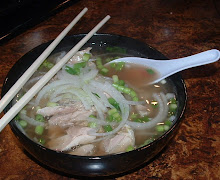I suppose I learned it from watching my mom when I was about 6 or 7. Every once in a while, usually in the winter, she would bake bread on the weekends. There is nothing that is more satisfying then the smell of fresh bread baking in the oven. Nothing can compare to that yeasty, sweet smell that hangs in the air filling every room in the house. You almost instinctively reach for the butter dish when you smell it!
I have been playing around with this bread recipe which is fairly easy to prepare and can be used for almost any meal situation. It is a modified french bread recipe that I found on the Internet...somewhere.
A few tips. I use only King Arthur Flour so if you use other than King Arthur you might not have exactly the same results. Also, use only EVOO for oil. (EVOO seems to be the new acronym for Extra Virgin Olive Oil.) I used a Kitchen Aid mixer for this but that doesn't mean you can't do it by hand. God Bless ya if ya do!
Let's get to it.
- 6-7 Cups King Arthur Bread Flour
- 3 tablespoons sugar
- 1 tablespoon of salt
- 5 tablespoons olive oil
- 2 packages yeast
- 1/2 cup warm water
- 2 cups hot water
- heavy pinch of sugar
Start off by taking a small bowl and rinse it out with how water (not boiling, tap will do just fine). This is to take any chill off the bowl. Now put a couple of pinches of sugar at the bottom of the bowl and pour in 1/2 cup of warm water. Water temp should not be too hot else wise you will kill the yeast. Sprinkle the yeast on top and stir with spoon until most is dissolved. Set aside.
In your mixing bowl, put in three cups of flour, salt, sugar (you can sub some of the sugar with honey) and blend with mixing paddle on slow speed to combine. While the mixer is on low, add the 2 cups of hot water and then the 5 tablespoons of oil. Mix on low for one minute and then on the next higher speed for two minutes. Slow the mixer down to low and add the yeast/water/sugar mixture. Mix until combined, about 2 minutes.
Add 1/2 cup of flour on low speed until combined then mix on the next higher setting (#2 on the Kitchen Aid mixer) for two minutes. At some point the paddle will need to be swapped out with the dough hook attachment. You'll know when the time is right when the dough starts to clump on the the center of the paddle, and doesn't work as well. Add the flour a half a cup at a time using a the low (#1) speed at first then increasing the speed (#2) and beating for two minutes. Once the dough starts to pull away from the bowl, and stays off the side, keep the speed on #2 and beat for 10 minutes. This is the kneading phase.
Once the dough as beat for 10 minutes worth of kneading, remove the dough to a oiled bowl and coat the dough ball by shaping it into a ball, then flipping it over in the bowl to coat. Place in warm, draft free place and let rise. I cover my bowl with a terry cloth towel but you can use also use saran wrap. In about an hour, the dough should double in size.
Once the dough has doubled in size (about an hour, maybe a little more) remove dough to a very lightly floured, cleaned, clutter free, kitchen counter. Punch the dough down and remove all the air in it. Pretend it's your boss.
Cut dough into two equal parts and let it rest on same counter under towel for about 10 minutes. This will help relax the dough and make it easier to work with. Roll the dough out into a rectangle and roll into a loaf. Place on baking sheets that are lightly covered with cornmeal. Cover with towel and let rise again for about 1-2 hours. Bake in 400 degree oven, middle rack, for about 30 minutes. Remove from oven and carefully turn upside down and tap your finger on it. If it sounds hollow, you got bread! If not, leave upside down on sheet and return to oven for another five minutes. Okay, if you were smart, you would have taken a stick of butter out of the fridge and hour ago so that it would be nice and soft for your fresh bread! ENJOY!
I don't want to hear any whining about not having time to bake good bread at home. If you got time to watch TV, shop online, go to the mall, surf the internet, or read this blog you got the time. Nuff said.
Variations....
You can use this same recipe to make hamburger rolls, bread sticks, regular rolls whatever. You can add herbs to the flour stage for herbed bread. You can chopped olives and whole garlic to the dough stage as well.








